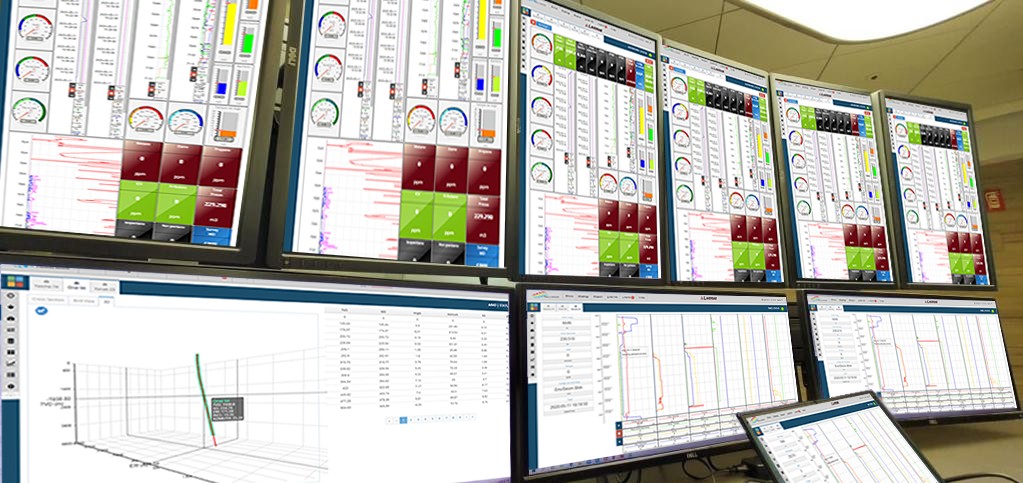
In the realm of IT asset management, automation has emerged as a pivotal force, transforming traditional approaches into dynamic, efficient operations. The integration of IT asset management automation tools has not only streamlined the tracking and managing of IT assets but also significantly reduced manual errors and operational costs.
This evolution towards automation allows organizations to focus on strategic initiatives by alleviating the burden of routine asset management tasks.
Table of Contents
Revolutionizing Asset Tracking with Automation
The Evolution
Source: linkedin.com
Automated asset tracking technologies have undergone significant evolution, transitioning from basic barcode scanning to sophisticated RFID and IoT-based systems. This progression has enabled more detailed and accurate tracking of IT assets across their lifecycle, from procurement to disposal.
The adoption of these advanced technologies allows businesses to automatically update asset records, reducing the need for manual input and minimizing the risk of discrepancies.
Benefits of IT Asset Software in Asset Management
By automating routine tasks, such as inventory updates and maintenance scheduling, IT asset software frees up valuable time for IT teams to focus on more critical projects.
Additionally, the software provides actionable insights into asset performance, helping organizations make informed decisions about asset refreshes and retirements.
Real-time Monitoring and Management with Automation

Source: laversab.com
With asset automation tools, organizations can instantly access information on asset location, status, and performance.
This immediate visibility facilitates proactive maintenance, timely updates, and swift resolution of asset-related issues, ensuring minimal downtime and optimizing the overall performance of IT resources.
Digital Asset Management and Automation Tools
Integrating Automation
Incorporating automation into digital asset management significantly enhances the ability to organize, store, and retrieve digital files efficiently.
Automated digital management systems streamline the categorization, tagging, and archiving of digital assets, such as documents, images, and videos. This integration not only saves time but also improves consistency and accessibility across the organization, enabling teams to quickly find and utilize the digital assets they need.
The Impact of Automation on Digital Asset Handling
Automation profoundly impacts digital asset handling by optimizing workflows and reducing manual intervention. It ensures that digital assets are managed with precision, from automatic version control and rights management to the distribution and publication of content.
By automating these processes, companies can ensure that their digital assets are always current, compliant, and ready for use.
Tools and Technologies for Automated Digital Management

Source: entrepreneur.com
These tools offer a variety of functionalities tailored to meet the diverse needs of businesses, from small startups to large enterprises.
Below is an in-depth look at some of the key tools and their unique functionalities:
- Digital Asset Management (DAM) Software: DAM software acts as a centralized hub for storing, organizing, and managing digital assets such as images, videos, documents, and more. Key features include robust metadata tagging capabilities, which facilitate easy searching and retrieval of assets.
- Content Management Systems (CMS): CMS platforms are essential for businesses that regularly create and manage digital content. These systems enable users to easily create, edit, publish, and manage content without needing extensive technical knowledge.
- Workflow Automation Platforms: These platforms are designed to automate and optimize digital asset workflows. By automating routine tasks such as approvals, updates, and notifications, workflow automation platforms can significantly enhance operational efficiency, reduce manual errors, and eliminate hindrances in the content creation.
- Artificial Intelligence (AI) and Machine Learning Tools: AI and machine learning tools offer sophisticated capabilities that can dramatically enhance digital asset management. Features such as automatic tagging of images using visual recognition technology and predictive analytics for content performance can save time, improve content relevancy, and enhance decision-making processes.
- Cloud Storage Solutions: Secure and flexible storage solutions are critical for managing digital assets effectively. Cloud storage provides a scalable and accessible way to store, share, and back up digital assets. Automatic syncing of files across devices and automatic versioning of files, ensure that teams always have access to the latest versions of assets, regardless of their location.
- API Integrations: The ability to connect and integrate different systems and tools is essential for a seamless digital asset management experience. API integrations allow for the automation of tasks across different platforms, enabling businesses to create a cohesive ecosystem for managing digital assets. This interconnectedness facilitates more efficient processes and a unified view of digital asset management tasks.
Leveraging the right mix of tools and technologies for automated digital management can transform how businesses handle their digital assets. y carefully selecting and integrating these technologies, businesses can not only streamline their digital management processes but also unlock new opportunities for innovation and growth.
IT Asset Management Automation for Enterprises
Scaling Automation for Large Organizational Needs
As organizations grow, so too does the complexity and volume of their IT assets.
Implementing automation at scale involves deploying sophisticated asset management systems capable of handling extensive inventories across multiple locations. This ensures that enterprises can maintain a high level of accuracy and control over their assets, optimizing performance and compliance while minimizing costs.
Achieving Control and Visibility over Asset Inventories

Source: linkedin.com
As emphasized previously, automation plays a critical role in this by providing real-time insights into asset status, location, and performance.
Automated IT asset management systems offer dashboards and reporting tools that deliver comprehensive overviews of the IT asset landscape. This visibility supports strategic decision-making, enabling businesses to proactively manage their assets and address issues before they impact operations.
The Lifecycle Approach to IT Asset Automation
Ensuring Compliance and Maximizing Value at Each Phase
By automating the IT asset lifecycle, enterprises can ensure compliance with legal and industry standards at every phase. Automation facilitates the meticulous documentation and management of licenses, warranties, and disposal records, making it easier to adhere to compliance requirements.
Additionally, by automated digital asset tracking and analyzing asset performance and usage data, organizations can make informed decisions about when to upgrade, repurpose, or retire assets.
IT asset Management Best Practices
Implementing IT asset lifecycle automation requires a strategic approach to ensure that processes are efficient, compliant, and aligned with business objectives. Here are some best practices:
- Data-Driven Disposal Decisions: Leveraging data analytics to inform disposal decisions is crucial. By analyzing data on asset performance, maintenance costs, and market value, organizations can identify the most opportune time to retire or replace assets. This approach ensures that decisions are not based on guesswork but on concrete data, optimizing the asset’s value and minimizing costs associated with underperforming or obsolete equipment.
- Streamlined Procurement Processes: Automation can significantly streamline the procurement process, making it quicker and more efficient to acquire new IT assets. By utilizing automated systems, organizations can ensure that procurement aligns with their current needs and compliance standards, avoiding unnecessary purchases and ensuring that new assets are introduced into the environment with minimal disruption.
- Regular System Reviews and Updates: The IT landscape is continually evolving, with new technologies emerging and business requirements changing. To ensure that the IT asset lifecycle automation remains effective, it’s essential to periodically review and update the automation tools and processes. This involves assessing the current automation strategies for effectiveness, incorporating new technologies that can enhance automation, and adjusting processes to meet the changing needs of the business.
Adhering to these best practices allows organizations to fully harness the benefits of IT asset management automation, enhancing operational efficiency, reducing risks, and optimizing the value derived from their IT assets.
Implementing Automated IT Asset Management Systems
Key Considerations in Choosing IT Asset Management Software

Source: elearningindustry.com
Key considerations include the software’s scalability, to accommodate growth; its compatibility with existing IT infrastructure; the range of features it offers, such as real-time tracking and reporting; and its user-friendliness, ensuring that staff can utilize it without extensive training.
Additionally, evaluating the vendor’s support services and the software’s security features is crucial to ensure that your asset data remains secure and that assistance is available when needed.
Measuring the Success of Automation Implementations
The success of an automation implementation can be measured through various metrics, including improvements in asset utilization rates, reductions in manual errors and operational costs, and enhanced compliance and security postures.
Regularly examining these metrics, along with stakeholder feedback, helps in fine-tuning the system and processes to maximize the benefits of automation over time, making feedback tools an integral part of the evaluation process.
Conclusion
Automation represents a key to unlocking efficiency and strategic value in IT asset management.
By investing in automated IT asset management systems and embracing best practices in asset lifecycle automation, enterprises can not only optimize their IT asset handling but also position themselves for success in a digital-first world.
As we move forward, the integration of emerging technologies and the continuous refinement of automation practices will play a critical role in shaping the future of enterprise IT asset management, offering exciting possibilities for innovation and growth.







